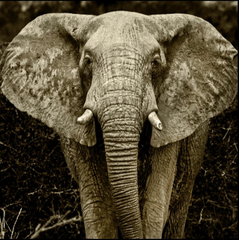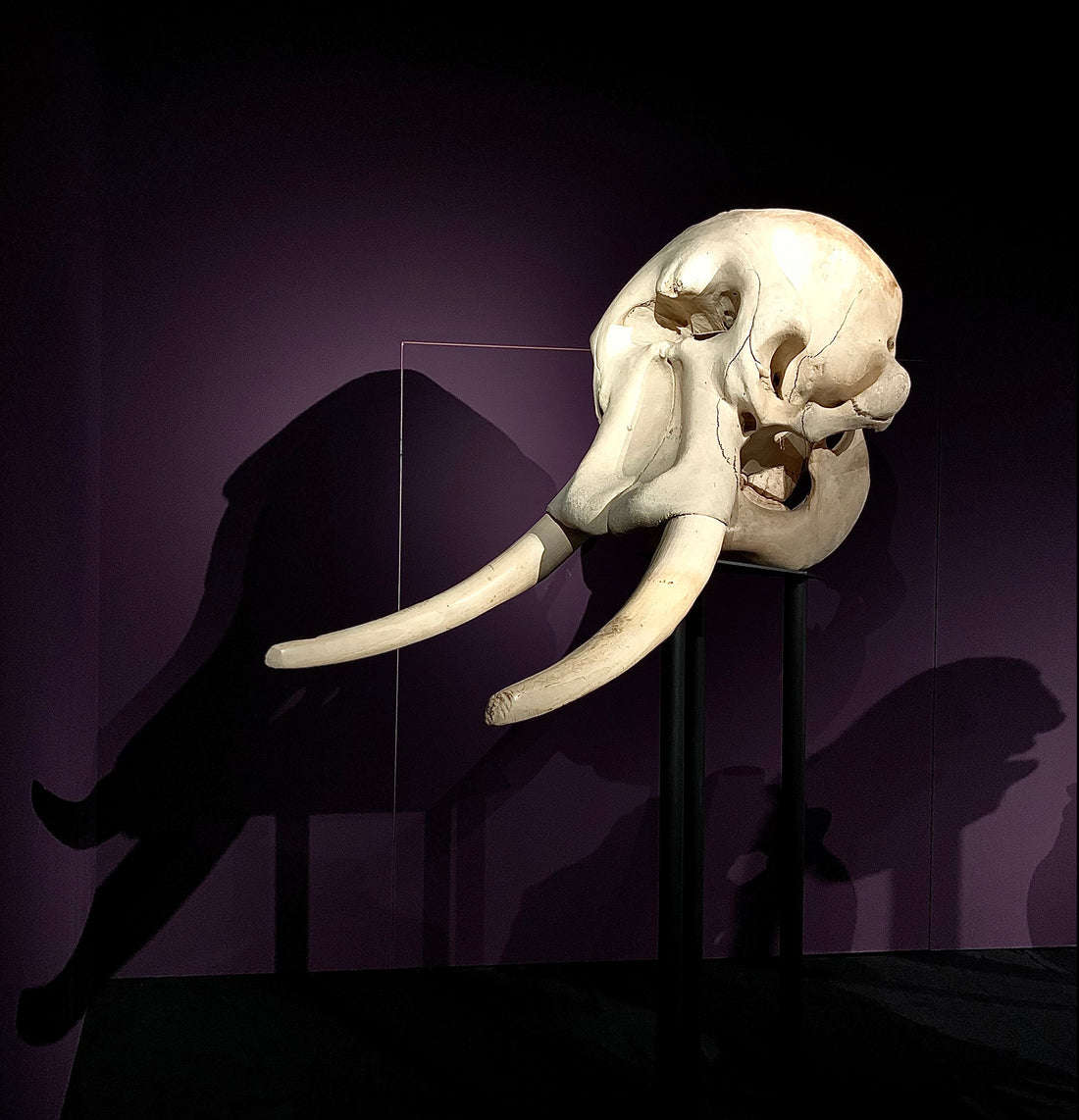Why are elephants an endangered species?
I was lucky to visit the new Humboldt Forum in Berlin, which has opened its doors this summer, with cultural and science exhibitions that will nurture your world perspectives.
One of the exhibitions I visited is very close to my heart:
Terrible Beauty: Elephant - Humans - Ivory
The tumultuous story of human’s relation and fascination to ivory and how this obsession has almost extinguished elephants, rhinoceroses, and other mammals from earth.
With a powerful display of objects, images, audio statements and sound installations, it will bring you to witness the profane effect of the unscrupulous hunt to obtain the ivory from wild animals and the consequences it has for wild life and the humans criss-crossed between this illegal traffic.

•Images documenting the trade in animal ivory over centuries•

Narrated from different time periods, we learned of the early uses and the cruel obtention of animal ivory.
In the present and even with global laws that ban the commercialisation of animal ivory, it is still sought out for what many believed are its unfounded medical properties, to be used as a craft and luxury material and even as a trophy piece from murderous hunts.
The removal of the tusks in a mammal result almost invariably in the dead of the animal and the unbalancing of whole wildlife populations. Making elephants one of the most endangered animals on our planet.


•Exhibit of elephant tusks and endangered mammals skulls•
Education, the key to preservation
Searching to educate visitors in the preservation of the natural world, the exhibition presents alternatives to the use of animal ivory.
Tagua Nut, also known as Vegetable Ivory, is among one of the few alternative materials displayed in the exhibition, that can resemble the uniqueness and quality that make animal ivory so desirable.
Tagua Nut not only mimics the texture and consistence of Ivory, but it is also available in great quantities. An organic and vegan resource that can be cultivated sustainably.
•Tagua Nuts displayed at the exhibition•
•Tagua Nuts from shell to bead•
Do you wonder what the tagua nut is?
Tagua nut (also known as vegetable ivory) is the signature material in our sustainable jewellery range.
They are the seeds from palm trees in the Phytelephas genus. Dried tagua nuts have a very hard and dense consistency with a white fine marbled grain structure and can be dyed with natural dyes.
Our organic tagua nut jewelry has an organic life span: from the tagua nut palm to the tagua nut beads that are made into our rings, bracelets, earrings, and necklaces designs. Our products will naturally decompose like wood or seeds when they reached their end of life over decades.
•Botanical drawing of the Phytelephas / Tagua Nut•
We create elegant and timeless designs that will fit the modern woman style as well as her sustainable values.
Click here and get inspired with our range of handmade, vegan friendly and cruelty free tagua nut jewellery.
.............................................................................
We can all contribute to the protection of wildlife
We might feel that it is a haunting and impossible task to singlehanded save endangered species or stop our planet warming, but even the smallest of gestures have an impact and here is how our own actions can help:
- Combat the desirability of animal ivory.
- Reject any produce from wildlife sources.
- Do not share, like or promote content that encourage the consumption of endangered animals
- support and donate to organizations/charity/brands that encourage the preservation of nature and wildlife around the world.

•Illegal elephant tusks being burnt after been seized•
.............................................................................
…And to finish let me share some fun facts about elephants:
- Elephant ears act as fans to cool them down in the blazing African heat
- An elephant’s skin is 2.5cm thick in most places. This helps them to retain water and keep cool in the heat.
- Elephant’s trunks can contain up to 8 liters of water at once.
Elephants never forget, their temporal lobe is bigger than that of people.
- They Can Hear Through Their Feet, by detecting seismic vibrations on the ground.
- They are extremely emotional creatures — elephants even grieve lost family members.
- They "hug" their trunks to say hello to each other.
Aren´t elephant just fascinating and way tooooo adorable?
Let´s protect them




•Images Instagram•
.............................................................................
Please share this post and leave me your comments and thoughts bellow.







